NTU Then and Now
Join us for a walk down memory lane and see how the NTU campus has changed over the years.
Text: Derek Rodriguez
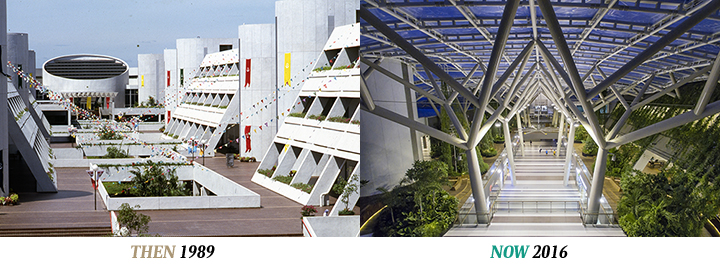 The North Spine Plaza, built in 2016, has become a major hub of activity in NTU. Come down on your next visit to find a supermarket, rows of retail and food outlets, an event space, a tree-lined sky deck and even usable artwork such as a bench that harvests solar energy and channels it to charging stations for electrical devices here.
The North Spine Plaza, built in 2016, has become a major hub of activity in NTU. Come down on your next visit to find a supermarket, rows of retail and food outlets, an event space, a tree-lined sky deck and even usable artwork such as a bench that harvests solar energy and channels it to charging stations for electrical devices here.
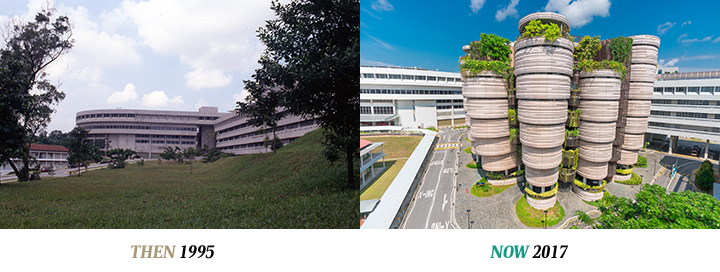 The Hive, NTU’s iconic learning hub, is the centrepiece of flipped learning and has been described by CNN as having redefined the traditional classroom. The brainchild of renowned architect Thomas Heatherwick, it was designed to stimulate discussions and conversations inside and out of its smart classrooms.
The Hive, NTU’s iconic learning hub, is the centrepiece of flipped learning and has been described by CNN as having redefined the traditional classroom. The brainchild of renowned architect Thomas Heatherwick, it was designed to stimulate discussions and conversations inside and out of its smart classrooms.
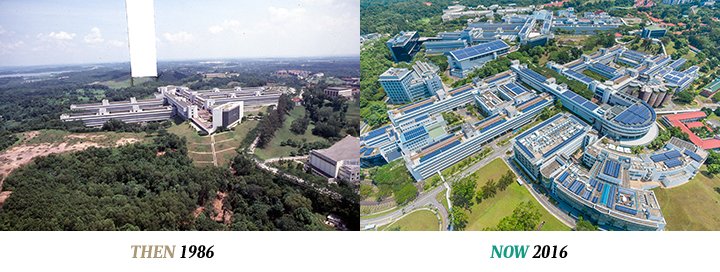 In 1986, the brand new North Spine housed the first three engineering schools of NTI. Since then, the North Spine and the other "senior citizen" on campus, the Administration Building, have been joined by many other solar panel-lined blocks, including the South Spine, the School of Physical and Mathematical Sciences, the School of Biological Sciences, The Hive and the Experimental Medicine Building. What other buildings can you spot?
In 1986, the brand new North Spine housed the first three engineering schools of NTI. Since then, the North Spine and the other "senior citizen" on campus, the Administration Building, have been joined by many other solar panel-lined blocks, including the South Spine, the School of Physical and Mathematical Sciences, the School of Biological Sciences, The Hive and the Experimental Medicine Building. What other buildings can you spot?
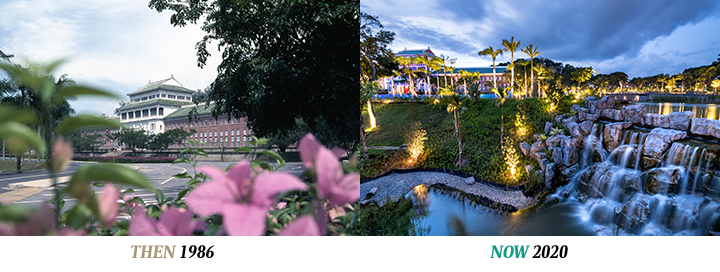 In 2020, we moved the road running in front of the Chinese Heritage Centre, enlarged Nanyang Lake, and created a waterfall. The result is a nine-hectare heritage precinct that makes it the go-to recreational spot for the NTU community as well as residents in the Jurong neighbourhood.
In 2020, we moved the road running in front of the Chinese Heritage Centre, enlarged Nanyang Lake, and created a waterfall. The result is a nine-hectare heritage precinct that makes it the go-to recreational spot for the NTU community as well as residents in the Jurong neighbourhood.
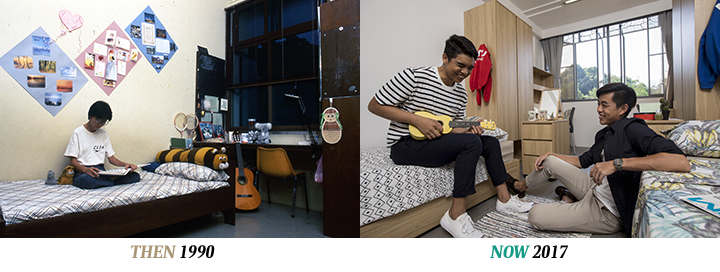 The first halls in NTU were built in 1988, and by 1990, seven halls housed its growing student population. Today, hall life is a major part of the NTU experience, with 23 residential halls accommodating more than 13,000 undergraduates.
The first halls in NTU were built in 1988, and by 1990, seven halls housed its growing student population. Today, hall life is a major part of the NTU experience, with 23 residential halls accommodating more than 13,000 undergraduates.
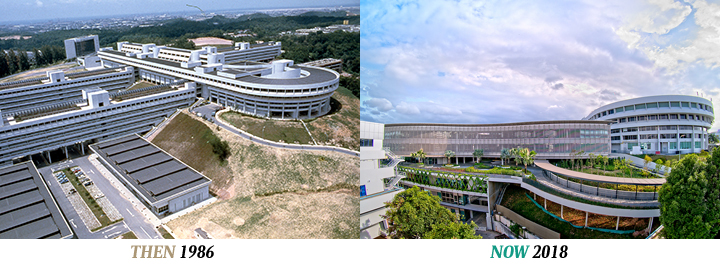 A slope beside the head of the North Spine is now occupied by The Arc, NTU’s second learning hub. Like The Hive, it does away with traditional classroom layouts and boasts 56 new generation classrooms and curved lines that keep cool air and ideas flowing.
A slope beside the head of the North Spine is now occupied by The Arc, NTU’s second learning hub. Like The Hive, it does away with traditional classroom layouts and boasts 56 new generation classrooms and curved lines that keep cool air and ideas flowing.
This article first appeared in issue 2 of U, the NTU alumni magazine.

